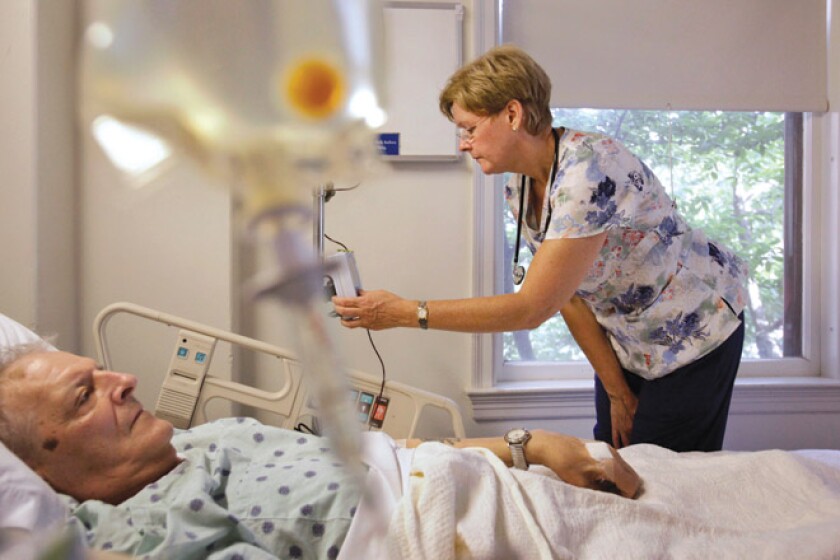In Brief:
- More than 100 million Americans don’t have a primary-care doctor.
- Access to primary care is crucial for reducing negative health outcomes like cardiovascular disease, diabetes, cancer and other chronic issues.
- A new report outlines policy strategies that are helping some states improve primary-care access.
Nearly a third of Americans — more than 100 million — don’t have a primary-care doctor.
Public health experts stress that access to primary care is the front line for disease prevention and early detection. Without it, it’s much more difficult to keep people free of chronic disease — a primary goal of Health and Human Services Secretary Robert F. Kennedy Jr.’s “Make America Healthy Again” platform.
A dollar spent on primary care saves 13 dollars in future health-care spending. Adults who see their doctor regularly lower their health costs by a third. But these benefits can only be achieved if there’s a doctor for them to see. By 2037, America could have nearly 90,000 fewer primary-care doctors than it needs.
A new report from the Milbank Memorial Fund and the National Academy for State Health Policy offers legislators a menu of policies that can strengthen primary care, and examples of states that are using them.
H.R. 1 (the One Big Beautiful Bill Act) has changed the world for states and state officials, says Milbank President Christopher Koller, a report author. They are going to be asked to do more things with fewer dollars.
“Here’s a way they can deliver on primary care,” he says.
Commitment to Primary Care
The Milbank report argues that strengthening primary care starts with making it a policy priority. Six states — Maryland, Virginia, Vermont, Massachusetts, California and Colorado — have established commissions to assess the state of their primary-care infrastructure, from the share of medical expenditures going to primary care to payment models. This is a critical first step in understanding gaps, setting targets for increased access and standardizing reimbursement practices.
The newest of these is a Primary Care Payment Improvement Working Group in Arkansas, established through legislation enacted in April. The state has consistently been ranked as one of the least healthy in the nation, stuck at 48th over the last four years in an annual report from the United Health Foundation, which ranks states according to factors ranging from community safety and air quality to birth weight, obesity and drug deaths.
The nine-member working group is tasked with developing a definition of primary care that is applicable to both commercial insurers and Medicaid, and to set a target for primary-care spending. This work will define the path forward for comprehensive primary-care delivery.
The Arkansas Academy of Family Physicians praised the legislation as a “historic win for primary care in Arkansas and a model for national reform.”
Debt and Discouragement
Physician salaries are well above what most Americans earn, but new doctors enter the profession with an average $200,000 in medical school debt. A third owe more than $250,000, and a third also carry debt from their undergraduate years.
On average, primary-care physicians earn 40 percent less than specialists, and the difference can be even greater for some specialties. Medical students who start out interested in primary care can be discouraged when they discover the salary gap, Koller says.
One in five Americans are insured by Medicaid. Many states pay primary-care physicians who treat them at rates below the Medicaid fee schedule. States can make primary care a more attractive option by bringing reimbursements up to 100 percent or above, the Milbank report suggests. In January, for example, New Mexico’s Health Care Authority raised reimbursement for Medicaid primary-care providers to 150 percent of Medicaid benchmarks.
In Tennessee, providers who participate in a primary-care delivery model for Medicaid patients called the Patient Centered Medical Home (PCMH) can receive bonus payments based on performance metrics such as outcomes, quality and efficiency. PCMH providers serve 40 percent of Tennessee’s Medicaid recipients.
States including Colorado, Maryland, Rhode Island and Vermont are working to develop payment models that increase primary-care investment across commercial, Medicaid and Medicare insurance systems.
The Full Meal
In a House hearing about the 2026 budget for the Department of Health and Human Services, Secretary Kennedy said that President Donald Trump had specifically asked him to increase primary-care access. “And one of the ways that we need to do that is to make sure that primary care physicians are getting livable wages,” he said.
It remains to be seen what the federal government will put forward to make this possible, but whatever comes, states will also have to do their part, Koller says.
Understanding the true scope of primary-care delivery, as some states are attempting to do, is an essential first step. It’s not the only recommendation from Milbank. There’s work to be done to build the workforce and to expand the range of services that primary-care physicians offer to their patients.
“Part of the message of the menu is you don’t just order one item from the menu,” Koller says. “You’ve got to get the full meal.”












